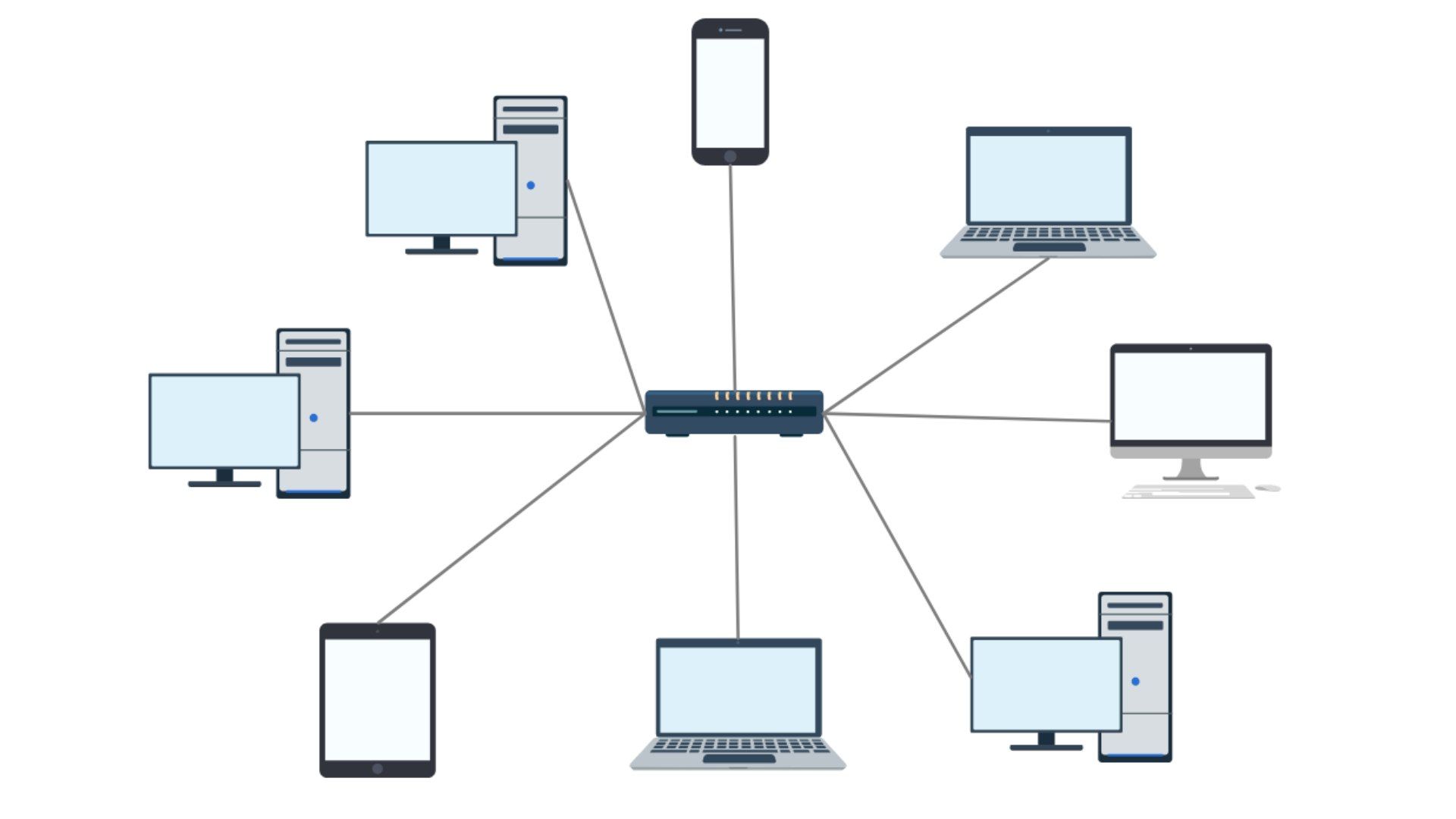Introduction to Computer Networking
A Quick Guide to STAR Topology

Introduction
Each device is connected to a central hub in a network structure called a star topology, sometimes referred to as a star network. It is by far the most popular Network Topology and one of the most used computer network setups. In this network configuration, a star-shaped icon represents every device connected to a central network device.
A wireless router, ethernet/cabled structures, and other parts can also adopt the star topology. There are two types of star topologies: active and passive. It becomes an active star when all of the network's data is processed by the outer nodes, which are connected to a single central hub. A passive star topology is one where the outer nodes are connected to a single central hub but do not handle any data.
Applications of STAR Topology
The easiest and most practical topology is a star one. As a result, it is readily apparent. Here are some industries that frequently employ star topology:
- Today, a lot of institutions employ star topology since they need to link several nodes in a lab.
- One industry where this architecture is applied so that consumers may maintain connections is banking.
- The star topology is also used in the construction of home networks.
Characteristics of STAR Topology
- When using a star architecture, connecting or disconnecting one device has no impact on the whole network.
- It is simple to deploy and appropriate for networks of any size.
- Because it is connected to several separate wires, it is independent.
- A star topology reduces the likelihood of data loss.
- The network may be expanded by using the daisy chain configuration.
Extended STAR Topology
The flexibility of computer networks is crucial because corporate needs for computing resources are expanding.
- You will need to expand your network with this growth in order to provide the sharing capability to all of your employees. The Extended Star Topology, which is interconnected in the Network and provides flexibility for joining more Nodes, requires a number of hubs or switches to be built.
- In order to expand this infrastructure, more Hubs are required. By using this method, you may continue to add Hubs or Switches and expand the network to fully meet the growing demands of users. It is frequently referred to as a Daisy-Chain Arrangement.
- The idea we employ in relation to USB devices is similar. In comparison to Bus Topology, this topology is not only significantly simpler but also much more advantageous. You do not need to pierce cables in order to remove drop lines. To expand the network, all you need to do is locate an open port on the Hub or Switch.
Advantages of STAR Topology
The following are the advantages of STAR Topology :
- Fault Tolerance
- Scalability
- Connecting multiple device types
- Low chances of data collisions
- Multiple Approaches
- Avoids point-to-point connections
Drawbacks of STAR Topology
The following are the disadvantages of STAR Topology :
- Failure of the central core
- Expensive
- Requirement of additional equipment
- Impact on Mobility
- Challenging to attach mobile devices
- Cables prone to damage
- Low data transfer rates
